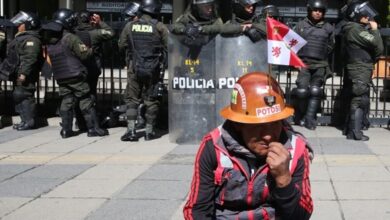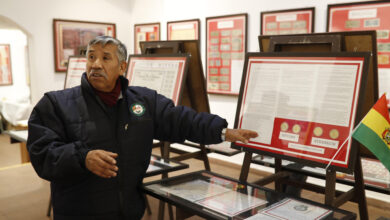3 myths about the middle class in Latin America
Social classes have always been marked by prejudices and in some countries there are misconceptions about the middle class.

Social classes have been marked by different prejudices. / Photo: Wikimedia – Pedro Felipe
LatinAmerican Post | Moises Campos
Listen to this article
Leer en español: 3 mitos sobre la clase media en Latinoamérica
The middle class in Latin America is located between the poorest and the richest in one of the most unequal regions in the world, maintaining a tense relationship with the State. It is emerging as a complex and diverse entity, and without a doubt its role is to be the point of union between the two social extremes.
Myths about the middle class in Latin America
As for defining the concept of the middle class , experts still do not agree on what its true meaning is and this has led to a series of myths in the population, some with certain bases and other products of the misinterpretation given by the different actors, both social and political.
These myths are:
1. There is only one middle class: Laís Abramo, director of the Social Development Division of the Economic Commission for Latin America and the Caribbean ( ECLAC), affirms that there is no single middle class, due to the complexity of the term class, recognizing three strata: medium low, medium intermediate and medium high.
2. Getting out of poverty to be middle class: Most countries establish an income level to be considered poor, for the vast majority of people, exceeding that level allows one to belong to the middle class. This group of the population is the one that manages to have a better quality of life, but under different circumstances, it can return to a situation of poverty . Sebastián Nieto of the Organization for Economic Cooperation and Development (OECD), exposes the importance of consolidating the middle class to avoid the permanent anxiety of returning to poverty.
Also read: Pandemics and epidemics could exacerbate racism xenophobia
3. Income level defines social class: While income level plays an important role when defining social classes, factors such as education, type of work performed and the position that a person occupies in their employment, also serve to determine the social class to which one belongs, as pointed out by the Associate Professor of the Department of Sociology of the University of Chile, Emmanuelle Barozet .
In Latin America, being middle class implies having a technical or professional education and working in non-manual trades, generally as technicians or professionals. An income level without the necessary conditions to generate an improvement in the quality of life permanently, places people in a situation of vulnerability. In Latin American countries, the conjunctural factors that have generated an improvement in the quality of life of part of the population do not have a firm basis, so that in scenarios such as the current ones, the vulnerable middle class flows towards the poverty levels.
The middle class versus the state
In most Latin American countries, the middle class has strengthened, as reflected in the report of the United Nations Development Program (UNDP), which is why it has become more demanding of State institutions, with a lower level of credibility in them and demanding better public services from them. However, that middle class is becoming increasingly dependent on government actions to ensure its permanence, which casts doubt on its power to bring about change, both socially and personally.




